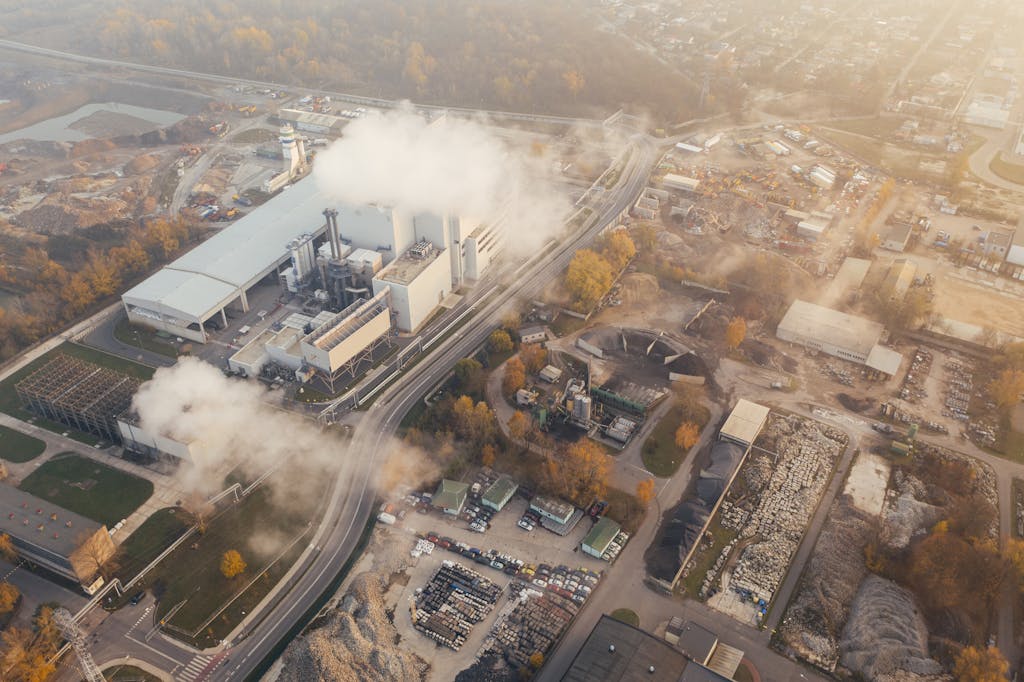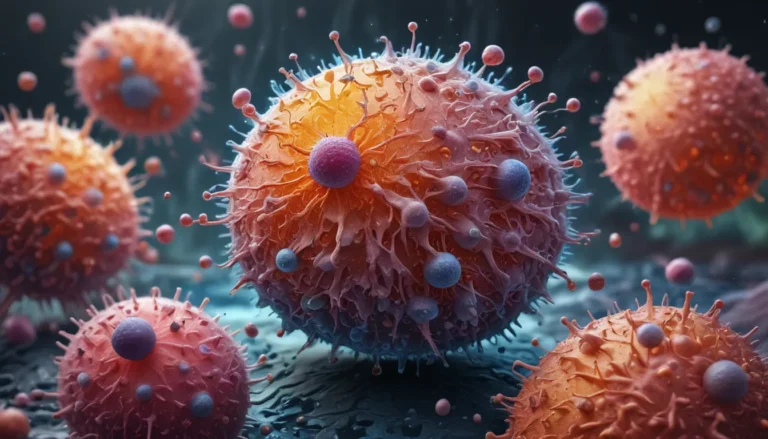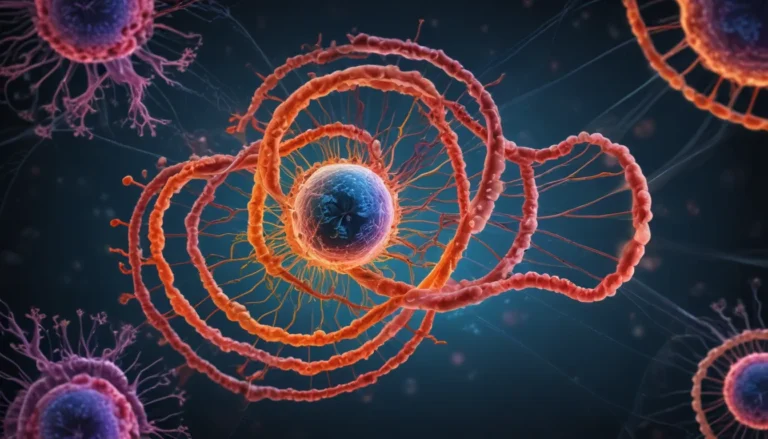A Note About Images: The images used in our articles are for illustration purposes only and may not exactly match the content. They are meant to engage readers, but the text should be relied upon for accurate information.
The carbon cycle is a fundamental process that regulates our planet’s environment and maintains the delicate balance of carbon dioxide levels in the atmosphere. This intricate system directly impacts Earth’s climate and plays a crucial role in sustaining life as we know it. Understanding the carbon cycle is essential for comprehending the complex web of interactions that shape our planet’s ecosystems and ensure their sustainability.
In this article, we’ll dive deep into the fascinating world of the carbon cycle, uncovering ten incredible facts that will broaden your knowledge of this vital biological process. From the role of plants in carbon sequestration to the impact of human activities on carbon emissions, we’ll explore the remarkable intricacies of the carbon cycle and its importance for life on Earth.
1. The Carbon Cycle: Earth’s Climate Regulator
The carbon cycle is not just a simple process; it’s a complex system that regulates Earth’s climate by controlling the concentration of greenhouse gases in the atmosphere. This cycle describes the movement of carbon dioxide (CO2) between the atmosphere, land, oceans, and living organisms. By maintaining a balance in carbon dioxide levels, the carbon cycle plays a crucial role in keeping our planet’s temperature stable and habitable.
Key points:
- The carbon cycle controls greenhouse gas concentrations
- It maintains Earth’s temperature within a livable range
- Carbon moves between various reservoirs, including the atmosphere, oceans, and terrestrial biosphere

2. The Ocean: A Massive Carbon Sink
When it comes to storing carbon, the ocean takes the crown. It contains the largest active pool of carbon near the surface of the Earth. In fact, the deep ocean contains about 50 times more carbon than the atmosphere! This makes the ocean a crucial player in regulating global carbon levels.
Did you know? The ocean absorbs about 25% of the carbon dioxide released into the atmosphere each year.
3. Photosynthesis: Nature’s Carbon Capture Technology
Plants are the unsung heroes of the carbon cycle. Through the process of photosynthesis, they convert carbon dioxide from the atmosphere into organic compounds, effectively removing CO2 from the air. This natural carbon capture technology is one of the most efficient ways to sequester carbon and mitigate the effects of climate change.
Fun fact: A single tree can absorb up to 48 pounds of carbon dioxide per year!
4. The Fast and Slow Carbon Cycles
The carbon cycle operates on two different timescales:
- The fast carbon cycle: This cycle completes within years, moving carbon between the atmosphere, biosphere, and oceans.
- The slow carbon cycle: Also known as the geological carbon cycle, this can take millions of years to complete, moving carbon through the Earth’s crust between rocks, soil, ocean, and atmosphere.
Understanding these two cycles helps us grasp the long-term impacts of carbon emissions and the Earth’s ability to recover from disturbances.
5. Human Impact on the Carbon Cycle
Human activities have significantly disrupted the natural balance of the carbon cycle. The burning of fossil fuels, deforestation, and industrial processes have led to a rapid increase in atmospheric CO2 levels. Since the industrial revolution, atmospheric CO2 has increased by nearly 52% over pre-industrial levels, resulting in global warming and climate change.
Alarming statistic: Human activities release about 9 gigatons of carbon into the atmosphere each year.
6. The Carbon Cycle and Ocean Acidification
As more CO2 is absorbed by the world’s oceans, it reacts with water to form carbonic acid, leading to a decrease in ocean pH levels. This process, known as ocean acidification, can have detrimental effects on marine life, particularly organisms with calcium carbonate shells or skeletons, such as coral reefs and shellfish.
Important note: Ocean acidification is often referred to as the “evil twin” of climate change due to its significant impact on marine ecosystems.
7. The Role of Microorganisms in the Carbon Cycle
Microorganisms play a crucial but often overlooked role in the carbon cycle. They are responsible for decomposing dead plant and animal matter, releasing CO2 back into the atmosphere. Additionally, microorganisms in the soil help maintain soil fertility and contribute to the formation of fossil fuels over millions of years.
Interesting fact: Some microorganisms can even fix carbon from the atmosphere, converting it into organic compounds without the need for sunlight!
8. The Biological Pump: Oceans’ Carbon Sequestration Mechanism
The ocean’s biological pump is a fascinating process that helps sequester carbon in the deep sea. It works like this:
- Phytoplankton absorb CO2 during photosynthesis
- When phytoplankton die, they sink to the ocean floor
- This process effectively transfers carbon from the surface to the deep ocean
The biological pump transfers about 11 billion tonnes of carbon every year into the ocean’s interior, playing a significant role in regulating atmospheric CO2 levels.
9. Carbon in the Earth’s Interior
While we often focus on carbon in the atmosphere and oceans, a significant amount of carbon is stored in the Earth’s interior. In fact, the mantle contains more carbon than the Earth’s surface by a factor of one thousand! This deep carbon cycle plays a critical role in maintaining terrestrial conditions necessary for life to exist.
Mind-blowing fact: Some scientists believe that the Earth’s core may contain as much as 67% of the planet’s carbon!
10. The Future of the Carbon Cycle
As climate change continues to alter our planet, the carbon cycle is expected to undergo significant changes. Climate models predict that carbon sinks, such as forests and oceans, may become less effective at absorbing CO2 in the future. This could lead to a feedback loop, where more carbon remains in the atmosphere, further accelerating global warming.
Key concern: The weakening of carbon sinks could amplify the effects of anthropogenic carbon emissions on climate change.
Conclusion
The carbon cycle is a complex and fascinating process that plays a crucial role in maintaining life on Earth. From regulating our planet’s climate to supporting diverse ecosystems, the carbon cycle is truly the lifeline of our planet. As we face the challenges of climate change, understanding the intricacies of the carbon cycle becomes increasingly important.
By learning about the various components of the carbon cycle, from the ocean’s biological pump to the role of microorganisms, we can better appreciate the delicate balance that sustains life on Earth. It also highlights the urgent need for sustainable practices and conservation efforts to mitigate the impact of human activities on this vital cycle.
As we move forward, it’s crucial that we continue to study and monitor the carbon cycle, developing strategies to reduce our carbon footprint and preserve the natural systems that help regulate our planet’s climate. By working together to protect and restore these vital processes, we can ensure a healthier, more sustainable future for generations to come.
FAQs About the Carbon Cycle
What is the carbon cycle?
The carbon cycle is the continuous process by which carbon moves through different reservoirs, including the atmosphere, oceans, plants, animals, and the Earth’s crust.
How do humans impact the carbon cycle?
Humans impact the carbon cycle through activities such as deforestation, burning fossil fuels, and industrial processes, which result in an increase in carbon dioxide levels in the atmosphere.
What role do plants play in the carbon cycle?
Plants play a crucial role in the carbon cycle through photosynthesis, which allows them to convert carbon dioxide from the atmosphere into glucose, releasing oxygen in the process.
How does the ocean contribute to the carbon cycle?
The ocean acts as a major carbon sink, absorbing about 25% of the CO2 released into the atmosphere each year. It also contributes through processes like the biological pump, which sequesters carbon in the deep sea.
What are the consequences of an imbalance in the carbon cycle?
An imbalance in the carbon cycle can lead to an increase in greenhouse gases, resulting in global warming, climate change, and other environmental issues such as ocean acidification.
How can we help maintain a balanced carbon cycle?
We can help maintain a balanced carbon cycle by reducing our carbon footprint through actions such as conserving energy, using renewable resources, and supporting reforestation efforts.
By understanding these facts about the carbon cycle, we can better appreciate the complexity of Earth’s systems and the importance of preserving them for future generations. Remember, every action we take to reduce our carbon footprint contributes to maintaining the delicate balance of this crucial cycle that sustains life on our planet.






